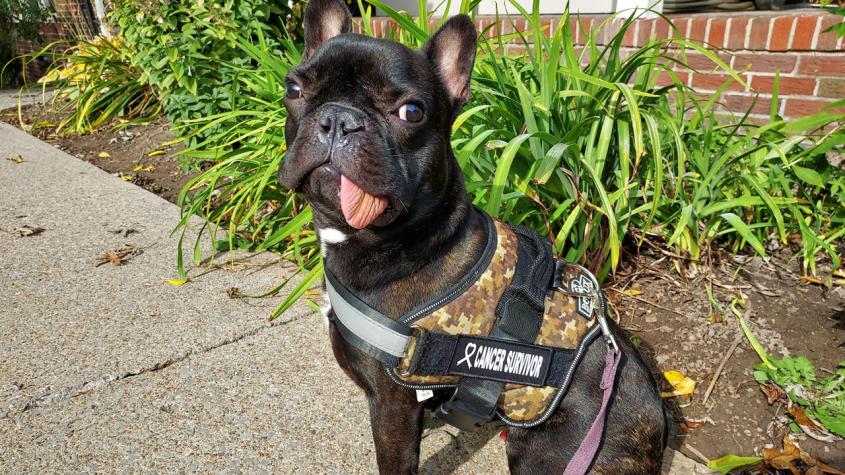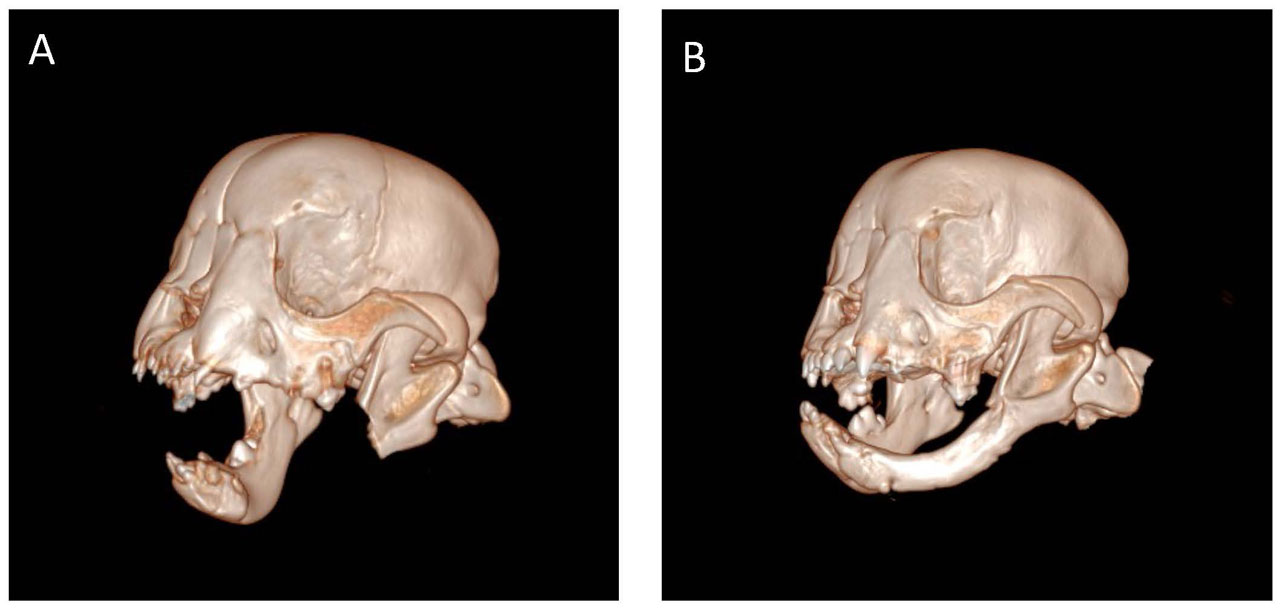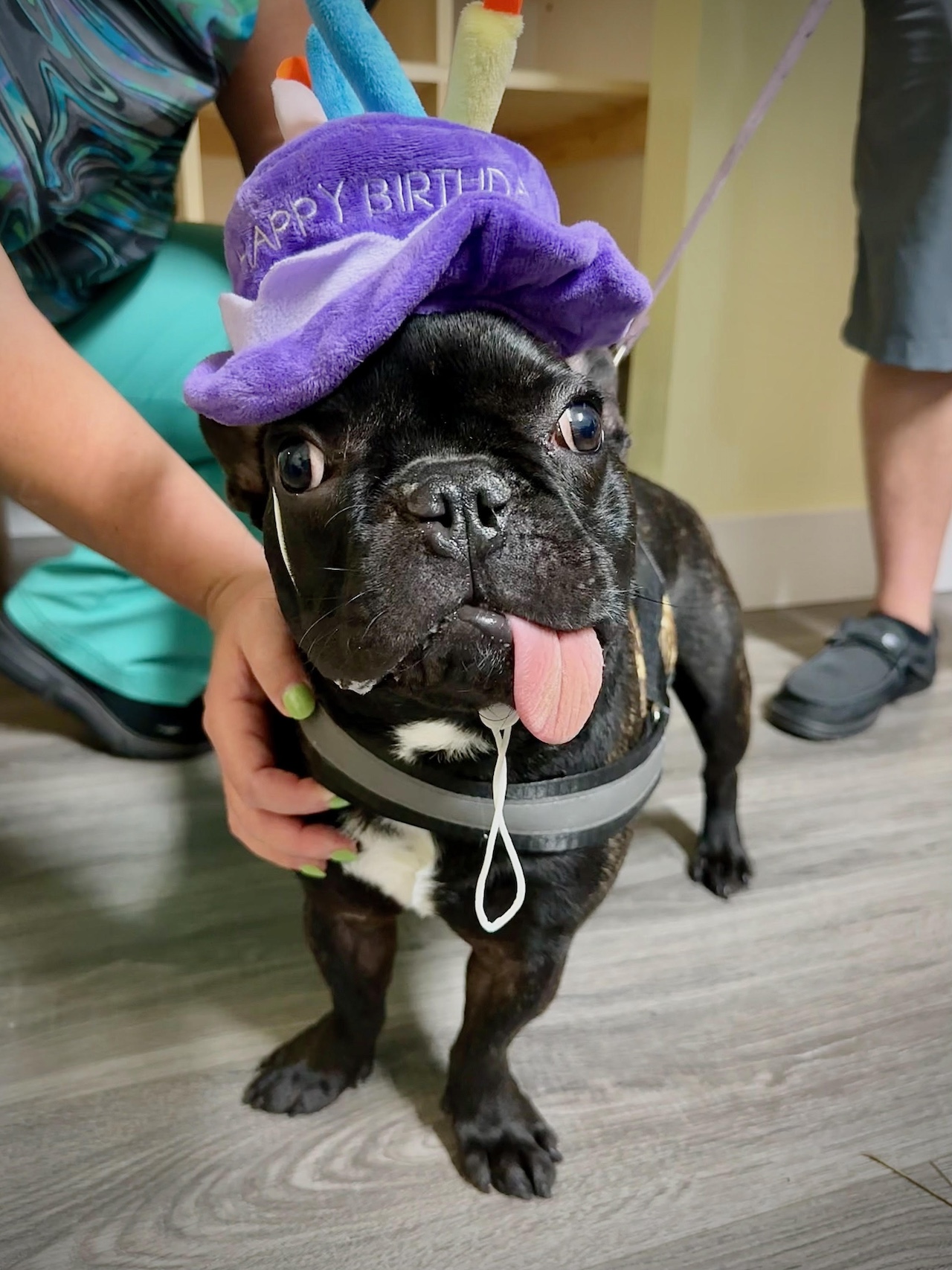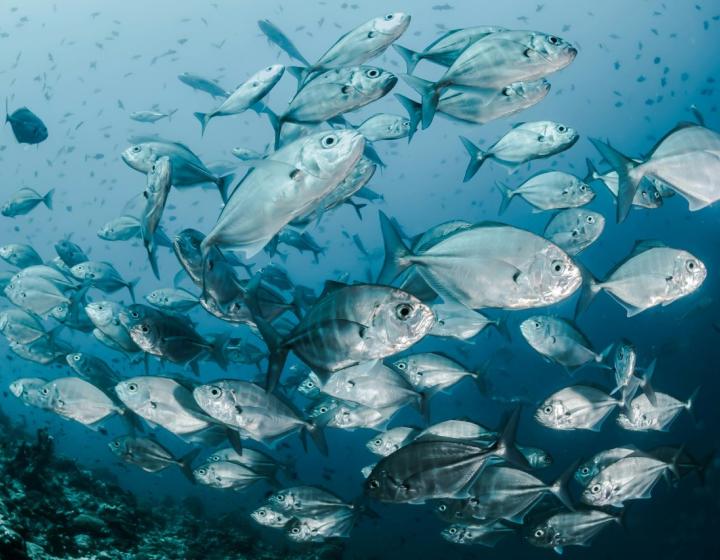French bulldog puppy spontaneously regrows jaw
Tyson-vest-1280px.jpg

To remove Tyson's tumor, the majority of the puppy's lower left mandible had to be removed. Photo provided.
A puppy’s jaw spontaneously regrew after Cornell veterinarians removed a majority of his lower left mandible due to cancer. Although this phenomenon has been documented in children, this is the first reported case of its kind for dogs of any age or breed.
Tyson, a three-month-old French bulldog, was originally scheduled to see Cornell’s Dentistry and Oral Surgery Service for cleft palate surgery when his primary veterinarian noted a cancerous tumor on his jaw.
“Tyson’s tumor was an oral papillary squamous cell carcinoma, which is a malignant cancer in dogs,” said dentistry and oral surgery resident Alexandra Wright, D.V.M. ’18, who led Tyson’s care team. “Oral squamous cell carcinoma is the second-most common malignant oral tumor in dogs, and this papillary subtype has previously been reported in young dogs.”

Wright published a report on this case in Frontiers in Veterinary Science, with co-authors Dr. Nadine Fiani, associate clinical professor and section chief, and Dr. Santiago Peralta, associate professor in the Dentistry and Oral Surgery Service.
Wright explained to Tyson’s owners, Melissa Forsythe and Mike Lacagnina, that to remove the tumor, a majority of the puppy’s lower left mandible had to be removed, which meant life without a fully functioning lower jaw.
“We didn’t know if we wanted to put a puppy through all this. The prognosis at the time was uncertain,” Forsythe said. However, since Tyson’s CT scans were clear, meaning that the cancer hadn’t spread to other sites in the body, “we decided to give him a chance and continue with surgery. We had no idea his jaw would grow back!”
Although there had been anecdotal cases of portions of mandibles regenerating in young dogs, this did not seem likely for Tyson because of how much bone was removed. The case report suggests that he managed to surpass all expectations due to a significant amount of periosteum, a thin membrane that covers bone surfaces, preserved during surgery. Periosteum contains blood vessels and nerves that support the bone and are crucial to the growth of the original mandibles. “This was likely imperative to the regeneration of new bone,” Wright said. It also helped that the dog’s tumor was detected so early, though the precise reason for the jaw regrowth in Tyson’s case remains a history-making mystery.
“More has to be done to understand the likelihood of this occurring in other dogs and if a specific age range makes a difference, but this case documents a very positive surgical outcome in a life-threatening situation,” Wright said.
New jaw, new lease on life

Tyson’s new mandible is nearly as functional as the original, though it is technically considered abnormal because it no longer has certain features. For instance, there is no mandibular canal, where major blood vessels and nerves typically reside, and there are no teeth. However, it is the same length as the one on the right, which prevents drifting, and there is no evidence of cancer in the regenerated bone.
After this surgery, Tyson underwent another to address his cleft palate. “He spent the majority of his puppyhood wearing an E-collar, not able to play with toys or chew on anything,” said Forsythe, who would take him for walks around the house to keep him stimulated. “He was the best patient.” She still doesn’t give him hard food or hard toys, but he enjoys his water-soaked kibble and many soft toys.
Forsythe keeps Wright up to date on how full Tyson’s life has been after his time at Cornell. He recently graduated obedience class, passed his Canine Good Citizen test and walked in a Christmas parade with his dog training friends. Wright describes this as the most rewarding part of the case.
Forsythe hopes Tyson’s outcome will benefit other dogs with this diagnosis. Wright agrees: “His case now demonstrates the possibility of complete bone regeneration when working with a patient this young.”
Written by Melanie Greaver Cordova




